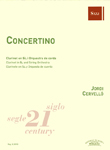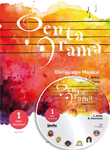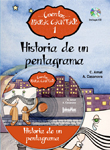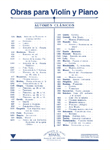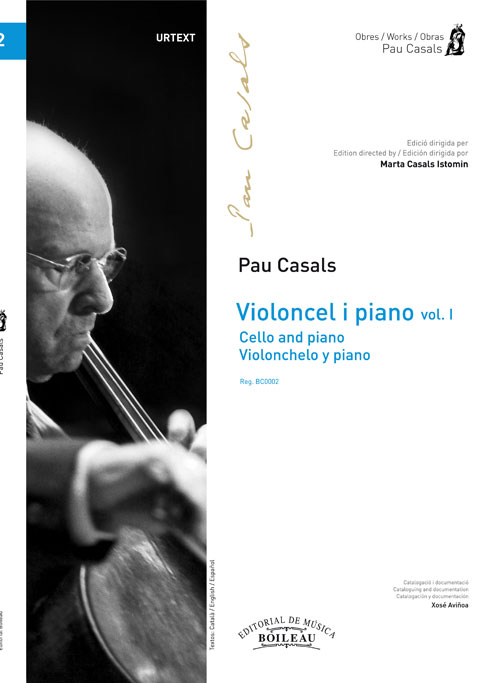Violoncel i piano, Vol. 1
Violonchelo y Piano
CASALS, Pau; CASALS, PabloReg.: BC0002
22,00 €
P.V.P. (VAT included 4%)
Add to cart
- Review: CASALS ISTOMIN, Marta
- Ensemble: Duos: With piano.
- Genres: Classical / contemporary: Chamber.
- Language of the comment: Català/English/Castellano
- Product format: Partitura + particellas
- Difficulty level: Intermediate-advanced
- Period: Romanticism
- Publishing house: Editorial Boileau
- Collection: Pau Casals
- No. of pages: 60+12
- Measure: 31,00 x 23,00 cm
- Lenght: 18'00"
- ISBN: 978-84-8020-903-8
- ISMN: 979-0-3503-0848-2
- Available in digital: No
- Available for rent: No
The group of works of these two volumes for cello and piano represent Casal’s early contributions to this instrument. Despite the premature nature of some of these compositions (he composed the first at 16), they already display an astonishing command of the cello technique, a consolidated inspiration and a clear knowledge and cultivation of the academic and concert repertoire of the cello. They are small pieces that reflect the expectations of the training composer and his awareness of the difficulties of beginning to create pieces of a greater formal scale.
The Concert for cello and piano was also written in this period, but was not included in exercise books as it was in sketch format (in all probability it was composed for a future concert for cello and piano). In this piece, despite its inceptive nature, Casals is already working with the piano as an instrument to dialogue with, marking the start of his creative aspirations. In contrast, the Competition piece has a very different sense. He composed Peça de concurs, for the Conservatory of Paris and it has been published due to its academic nature and personal challenge. At the end of the second exercise book, six cadences for solo cello have been included that were both composed for concerts of the great cello repertoire. They are short episodes that hold the listeners’ interest as they show Casal’s creative and performing skill for the instrument.
This first volume contains four pieces for accompanied cello, which are similar in form as they usually adopt the ABA formula that is typical of the early chamber work of composers and a clear reference of the operatic da capo of the past. They fall within the old salon tradition that was typical of the time, in which composing large scale concert works was a venture with no prospects due to the lack of orchestras, soloists and appropriate venues. From the perspective of the sound content, each one shows a different aspiration, reflected in titles that were seeking an extent of creative freedom.
I.Ca-2.-Pastoral (Pastorale)
An early work for cello and piano comprising 12 hand-written pages in an imprecise format, which suggests a clear wish to express creative freedom. It begins with an A Minor key signature and 6/8 time. The work is divided into three sections, the first in the aforementioned key with a contemplative air that is typical of its name; the second section starts from bar 60 onwards in E Major and displays a more lively nature with an arpeggiated accompaniment of demisemiquavers; at the end of this second section, the discourse returns to the initial calmness. The signature of the piece states “Madrid, 25 December 1893. PC” Despite the basic nature of the work, it is already a very polished creation with a treatment of the cello that comes from an expert and the very well constructed piano accompaniment is perfectly adapted to its role of emphasising the development of the discourse. It is a non-complex piece with an A-B-A structure that lightly flows; the first theme is presented and then repeated with a variable dynamic before leading to a second central theme that is accompanied by arpeggiated demisemiquavers played with both hands. They act as a musical backdrop whilst the cello sings an episode with a lyrical feel. Finally, the first theme is revisited, which sets the scene for a dialogue between the two instruments.
I.Ca-3.-Rêverie
A piece comprising 8 handwritten pages in the F Minor key and 4/4 time. A central section, which modulates to C Major and a 3/4 time, introducing a livelier atmosphere finally goes back to the initial key. The signature reads “July. 96”. It is a resonant episode with informal aspirations and a clear evocative desire, as the name suggests. Piano and cello alternate as lead instruments; when the cello leads, the piano creates a background landscape environment that accentuates the contemplative nature. The moderato indication and the use of long notes in the melodic line open the way for an introduction to a main theme, which is repeated with varying dynamics.The central theme is a lot livelier thanks to the use of an accompaniment in tuplets of pauses and two quavers. As is common of the composer, the occasional chromaticism leads episodically to nearby keys, creating a suggestive environment.
I.Ca-4.-Hoja de álbum (Album sheet)
Early work comprising 7 handwritten pages, composed simply with long values that adapt to the movement’s “Andante con moto” indication. It is in the E flat Major key although its central section introduces constant alterations to the key, lending harmonic brilliance to the piece. The main time is 6/4, occasionally alternating with 3/4. In this piece the title also indicates the lack of a formal commitment, making the work a passage at the service of the melodic line like a kind of creative exercise, accompanied by the piano that alternates the linking of chords, which at times are very rich in passing chromaticisms that lend colour to the moment, with some passages of contrapuntal work. The signatures reads “February 1997 Barcelona”. A spontaneous nature prevails here, as the title of the work suggests.
I.Ca-5.-Romanza (Romance)
A piece in the F Major key and 4/4 time, comprising 10 handwritten pages according to the holographic writing of the time. It is a rich and varied work with an initial note reading “Moderato”. It contains several rhythmical indications that give guidance on the performance. It is signed “April 1997 Barcelona”. It is an early work that showcases Casal’s creative ability in the use of the soloist instrument, which patiently builds the theme, the Lied-inspired nature and the moments entrusted to the piano, which summarise the content of the previous theme. The central section is invigorated with the help of triplets and occasionally, an arpeggiated accompaniment on the piano. In this case the work is also built around an A-B-A structure, and the generative development of the melody combined with colourful episodes and varying intensities, convert it into a vibrant and suggestive piece.
Pastoral (2'30")
Rêverie (5'30")
Full d'àlbum (3'45")
Romanza (6'10")


